Dark Age of Camelot

| a game by | Mythic Entertainment |
| Platform: | PC (2001) |
| User Rating: | 9.3/10 - 3 votes |
| Rate this game: | |
| See also: | Medieval Games, Best MMORPG, King Arthur Games |
Despite the best efforts of Sony, FIFA and other big names in the industry to transform the PC games market into something hip and trendy, a glance at this week’s US charts knocks that idea for six. Dark Age Of Camelot from Vivendi Universal Publishing has been on the top of the charts for two weeks and looks set to remain there for a while. Max Payne, Flight Simulator 2002 and Operation Flashpoint, all one-time blockbusters, are put into the shade by this RPG giant. But why the sudden B rush? After all, aren’t RPGs two a penny? Well, not quite.
The battle for the online crown, despite valiant efforts by Asherons Call and Anarchy Online, has sat firmly on the head of Verant with EverQuest. And while it does have the new EverQuest: Shadows of Luclin shipping in the next month or so, Dark Age Of Camelot is just B a wee bit different. Initially it feels like your standard RPG fare. Create a character, chooseyour race/class/sex, assign attributes such as skill, dexterity and charisma, and roam around the land looking for creatures (Mobs) to kill and quests to fulfil. Gain experience, become an Uber Pimp and turn the game into a fashion show. While that may seem a bit cynical, that is the basic gist of almost all on-line RPGs. Every game has its rare items (or ph4t 133t, as they say) and strutting about in your high level (hard as hell to find - so don’t even ask) suit of armour, listening to the 'ohhhhs’ and 'ahhhs’ from low-level players (or nOObs), gives some people a kick. Sad people, who really should get out more, but who have a habit of congregating in online RPGs. However, we digress...
Mock Mythology
Based around British, Norwegian and Celtic folklore, Dark Age Of Camelot (DAoC) is set in the Kingdom of Albion, immediately following the death of King Arthur. You enter a chaotic land, in which peace has been shattered and dark forces threaten the Kingdom. You choose to be members of one of the three Realm: striving for supremacy: The Britons the Celts, or the Norse. The Britons hail from the former kingdom of Albion, once ruled by King Arthur. The Celts are from the wild and magical western island of Hibernia. The Norse are large barbarians fron the lands to the north. So for once, rather than having some horrific fantasy names, the developers have actually opened an atlas and a history book. For example, if you play as the Britons, you will find names such as Cornwall, Salisbury Plain and Hadrian’s Wall. The land is mapped on the British Isles although they have also included the mythical land of Lyonesse, which, according to legend, connected Cornwall to the Scilly Isles. The Realm of Hibernia (Ireland) and The Realm of Midgard (Scandinavia) are mapped in a similar fashion. I But having some mock trappings If mythology doesn’t a good game make. Thankfully, the developers have gone a bit further than just pe-creating EverQuest (although the Similarities are too many to ignore well get on to that later). The whole game exemplifies the latest work in online RPGs with fully 3D rendered characters and mobs. What’s more, you can customise your armour and weapons with various dyes to create personal look. Well, we did warn I you about the fashion victims. The .sounds, too, are head and shoulders above the competition, with rain tactually sounding like a downpour f of water as opposed to the usual tropical storm Iin an oil drum.
But what separates DAoC from the others (apart from some cutting-edge graphics), is its attempt to balance a |Player vs Player (PvP) Environment with a pure co-op arena. While there are three different realms, all with enough mobs and quests to keep you locked in for ages if you so wish, each of the three is also at war with the others. Now, the main problem with PvP is either 'spawn camping’, where mid-level players wait for newcomers to log on and promptly dispatch them (these players are usually aged 12, American and are a total pain in the arse), or 'gang banging’, where a team of players will rip through a town causing chaos. On the flip side, good PvP is loads of fun. So what developer Mythic has done is create frontier areas where mid- to high-level players (usually groups) can attack an enemy’s realm. However, to stop one big group rushing about they have put in forts and keeps which need to be captured before you can advance inland. And naturally, the further in you go, the tougher it becomes. The very far reaches are accessible by all sides, and it is not a nice place to walk about alone. And even if PvP isn’t your thing, there are still plenty of hostile mobs, quests and unpleasant dungeons where you can I co-op fight without risk of a PvP encounter.
Spot The Influence
Another good feature of DAoC is the anti-twinking. The art of twinking is when a high level or rich character player buys loads of the best kit for a new character, giving him a serious advantage over his peers. While in co-operative play the only effect on other players is a dented ego, in PvP it is seriously suss, and is regarded by many as cheating. We won’t bore you with the workings, suffice to say that if you give a low-level character high-level kit, he will break it very swiftly. OK, the system isn’t foolproof but it’s the best we’ve seen yet.
However, it is also very apparent that the developers were one-time EverQuest fans. The interface is remarkably similar and many of the commands are the same. What’s more, they have assigned factions to mobs in an identical fashion to EverQuest. Factions are basically a grouping for different types of Mobs. So any kind of Zombie or Skeleton would be assigned to the Undead faction. The more of the undead you piss off, the more hostile future encounters will be. And visa versa.
DAoC looks full of promise and if the sales in the US are anything to go by, it will storm the UK charts too. However, in Europe it’s coming out after the EverQuest expansion so the competition will be fierce. But it looks good, sounds good and, from what we’ve heard, plays good. Lets hope next month’s review is good.
Download Dark Age of Camelot

System requirements:
- PC compatible
- Operating systems: Windows 10/Windows 8/Windows 7/2000/Vista/WinXP
Game Reviews
However, what made MUD different from the other games around was that you weren't alone. While The Hobbit on the Spectrum and Colossus on the BBC had you solo in a nasty world, with MUD there were literally thousands of other people playing at the same time. And they were almost all students. You see, MOD was too big for the average microcomputer and instead lived on University mainframes. There then followed a running battle between players and the University IT managers. With the huge number of users, the servers went down faster than a lady of ill-repute, and the colleges were not amused.
Potential Market
It wasn't until the mid '90s that games companies really cottoned onto the fact that this was a vast untapped market, and that a first-person graphical way of playing an RPG might be a good idea (rather than using text). Several attempts were made to corner this market - Meridian 59, Asheron's Call and Ultima Online were some of the more successful. But it was Verant's EverquestVhat really set the genre alight At its peak, EverQuest boasted over 90,000 players at any single given moment. Which is both very impressive and very worrying at the same time.
That was two years ago, and until recently Verant were the unchallenged masters ot the MMORPG. But now a David and Goliath battle is raging. Mythic has finally launched Dark Age Of Camelot, and it has taken the gaming world by storm. And unlike all the other games, this one isn't set in some mythical place like Norrath or Britannia. It's set in Europe. Britain, Ireland and Norway to be precise.
The first thing you notice about the game is the graphics. Now, this isn't Unreal ll or Return to Castle Wolfenstein, but for an MMORPG it's the best we've seen yet. If you've been playing EverQuest, it does take getting used to. All the other games generally run at 640 x 480, so having a game run in high res (and fast) feels weird at first. But enough of the eye candy. What's the game like?
Learning From Others
While the older games kind of 'happened' then evolved over time, Mythic has been able to -well let's not beat about the bush - copy all the good bits from other games and ditch the stuff that used to really piss people off. For example, in most RPGs you have to quest. This means you are given a task, and then trot off slaying monsters and generally risking life and limb for a reward. And the reward was generally so crap that you wished you hadn't bothered. So the game just turns into a hack 'n' slash fest with scant attention paid to the quests by either the players or the developers. Not so DAoC. While some of the quests are time-consuming, the reward is far better than if you'd just spent the time playing 'spank the wood elf. So a big thumbs up there.
Another major gripe is 'twinking'. This is where a high-level player will kit out an 'alt' (another lower-level character he also plays) with an assortment of high-level gear he has but doesn't use himself, and then run about generally being a pimp. In a co-op environment this just leads to occasional bouts of jealously, but in a player-versus-player environment this gives the alt a massive advantage, and is seen by most as cheating. Mythic has got round this problem by creating level bands for pieces of equipment. In a nutshell, different pieces of armour are optimised for players of a certain level. If you have some armour that is designed for a level ten player and you are level 20, it won't be much use to you. On the other hand, if you have some armour that is designed for a level 30 and you're 20, you'll break it fast. So fast, that the benefits will be very short-lived. OK, we admit this isn't perfect and someone could just keep buying more, but it's an expensive hobby. Again, some good thinking.
But where DAoC really comes into its own is in the player-versus-player concept. Or more to the point, team versus team. The game has three different realms. These are Hibernia (Ireland), Albion (Britain) and Midguard (Norway). While you learn the ropes of the game and build your character, you are fairly safe from hostile humans. But once you get to level 30, you can cross into the other realms and do battle with likeminded individuals. At the time of going to press, Mythic is reworking the pros and cons of the player-versus-player element. Whether it will involve characters getting some real benefits (apart from the fun aspect) is still open to debate. But we like what we see so far.
Worthy Challenges
We could drone on about the sound effects, atmospheric lighting, the interaction with NPCs, the large number of armour, weapons, player classes and the very short patch times, but if you've played any RPG you'll know exactly what we mean (and the screen shots explain the rest). Even the price is reasonable compared to other commercial RPGs. In fact, the only fly in the ointment of an otherwise great game is the fact that the map areas are still quite small when compared to the likes of EverQuest. There are still a small number of bugs as well. EverQuest had two years of evolution to get where it is today, and by the time DAoC gets there, we'll probably all be playing Star Wars Galaxies. But it's still a worthy addition to the MMORPGs out there.
Expansions are the lifeblood of most massively multiplayer games, and Mythic's Dark Age Of Camelot is no exception. However, the latest add-on for the Medieval-themed fantasy RPG, New Frontiers, differs a little in its pricing policy: it costs nada. That's right, it's free.
In this case though, you'll be pleased to know that 'free' doesn't mean 'crap'. Instead, you get a complete revamping of the game's already excellent player versus player system, known in the Dark Age world as Realm versus Realm, or RvR. The realms - the English Albion, the Norse Midgard, and the Celtic Hibernia - are locked in perpetual combat over some 12 frontier zones.
What New Frontiers does is radically change the dynamic of the battle for those zones. Every map is new - crossed by waterways, dotted with castles, towers, bridges and gates. Combat now revolves around control of key fortifications and chokepoints, instead of trains of players traipsing about wondenng where the hell everybody else is.
A new mapping system gives you a quasi-real time update of where the battles are and who controls what, making coordination of attacks and defences much easier. Plus, a teleportation system, dependent on control of a chain of friendly towers, removes one of the worst flaws in the old system - that of having to spend more time running to the battle than actually fighting it.
Spoils Of War
The main reason to fight other players in Dark Age is to gain realm points, which eventually lead to realm abilities, which in turn mark the difference between powerful (read 'alive') and the less powerful (read 'dead') players. New Frontiers makes it easier to garner these laurels, with special awards for defending and attacking keeps. Even corpses, provided they did something worth rewarding before their untimely demise, can benefit.
Along with the new award system comes new abilities, and in fact, the old realm ability system went completely out the window with this expansion. The results are mixed. Some classes, namely ranged and magic classes, gain marvellously. Others, notably melee classes, get the clothyard shaft (study your medieval weapon history). The problem isn't the abilities per se, but the fact that combat in the expansion is almost completely siege-oriented. Unless you can lob a spell up onto the battlements or down onto the besiegers, you really don't have much to do in New Frontiers other than be a convenient receptacle for arrows, fireballs and curses. Consequently, warriors are passe and casters are all the rage, which is just less interesting all around.
Well Worth The Price
When you consider all of the new additions - including new RvR 'battlegrounds' for all levels from 1 - 44 (yes. you can go from whacking kittens and puppies to thumping Vikings and Celts before you're out of nappies), along with the free upgrade of the graphics engine for anyone still using the original Dark Age client -New Frontiers is a steal at, well, zero cost. For new players, coupled with Mythic's new 'free level a week' program, the new battlegrounds offer some incentive to start anew, but low participation on most servers makes this problematic. If you have existing high-level characters, it's a must-have.
Whether you subscribe to the 6th century Dark Age version of King Arthur or the French romanticised epics as told by Hollywood, the Arthurian legends are replete with tales of heroism, war and quests. All in all, an ideal setting for an online RPG.
Mythic Entertainment is taking a mixture of both forms of the legend and adding a few extra traditional fantasy elements to boot. Set after the death of Arthur, the Kingdom of Albion is trying to defend itself against the forces of two opposing realms, the Norse and the Hibernians. Players can quest for glory, found a trading empire or engage in player-to-player combat with opponents in the other realms and with AI monsters within their own realms.
Dark Age Of Camelot has possibly been the fastest moving game from concept-to-beta in recent memory -so fast that it is taking the fan base a little while to realise that this game is no longer simply 'vapourware' as are so many of its potential rivals. The first beta stage of DAOC is now over and beta2 is well underway. Hundreds of lucky testers are already enjoying the realm of Albion... and what a great realm it is. Graphically, DAOC is just superb. Even in beta the early models are good, and some of the release versions are the best we have seen in an online RPG. Basilisks roaming the Salisbury Plains look and move like the real thing (C'mon, you must have seen them?), while Undead Romans look like a cross between Romero's Living Dead and legionaries from Gladiator. Even the buildings look and feel just right (if you excuse any historical inaccuracies), and when running over the plains you will suddenly stop and say: "Blimey - it's Stonehenge!" No signposts required.
The completed spell effects in the beta are also excellent. The mageshielding spell has to be seen to be fully appreciated - just think of the shields in the film Dune and you'll have an idea. Character models and items are not yet completed - it is a beta after all - yet even these are extremely good and indicate the great potential for the final product. Camelot is looking good!
Days And Knights
Class and game balancing is the major thrust of the beta at this point, and early indications are more than promising. The typical class-based characters of RPGs are all present, but their implementation is often far from typical. Clerics, for example, are capable of more than simply healing and throwing about the odd buff (beneficial spells). Buffs can be applied once to group members and need never be re-applied, unless one of them dies. A special skill is required to do this, but this frees up the Cleric to have a far more active role in groups than is usual.
Similarly, Paladins are not the usual standby healers and so-so warriors. Paladin spells are heavily group-orientated and have been designed very cleverly to meld with those of the Cleric without imposing on one another.
With much still to be completed in the early races and classes, it is hard to predict the final outcome. Solo and group hunting are both feasible and enjoyable, though each has its benefits and drawbacks. You do not have to fight in a group, and judging by the current state of gameplay, Camelot is looking like a winner on that front.
Player Vs Player (PvP) and the opposing realms have not yet been introduced to the beta, so these elements remain an unknown quantity at this point. What can already be seen is that the world in which this will eventually all take place is a very large and smoothly designed affair. The player moves about within what could best be described as a bubble. This bubble allows the player to move seamlessly within the realms, each of which has a Homeland and a Borderland.
Currently, the Homelands of Albion take about an hour or so to run from end-to-end, and during the entire process you don't need to zone and you don't experience any boundary glitches at all - it's all very smooth indeed. The value that this adds to the feeling of being in a large land and to your immersion within the game cannot be overstated. When you first enter Camelot all you want to do is go and explore - it looks and feels that good. Even the chins of hardened betal testers will drop to the floor as the moon drops slowly over Stonehenge or dips silently below the horizon at Llyn Barfog.
Albion Rovers
The layout and naming of the lands of Albion is also well done. If you know modern Britain then you won't object to any of the placements, names or the feel of the areas. They may not be entirely accurate but they certainly do make sense and are well conceived. Similarly, the monsters are not your usual high-fantasy mish-mash. Mythic has obviously drawn from a good knowledge of ancient myth for all the realms, and some of the local legends are extremely well researched. Even monster names are more appropriate than those of many online role-playing games and utilise Celtic, Welsh and Norse legends. Mythic is not being shy with treating the gamer to a host of'new' names and creatures - beware, for example, the Cwn Anwnn of Lyn Barfog.
Dark Age Of Camelot has risen from the depths of obscurity and burst on to the forefront of upcoming MMORPGs and from what we have seen, deservedly so. If the current standard of work continues, DOAC is a sure-fire winner... and you can take that to the bank.
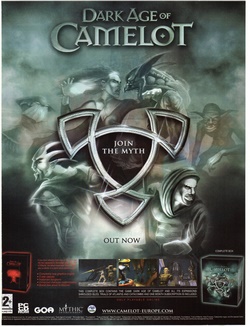
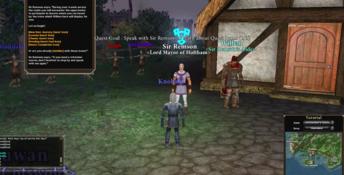
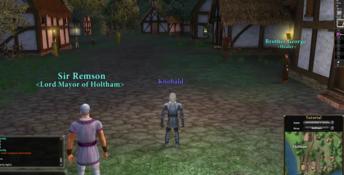

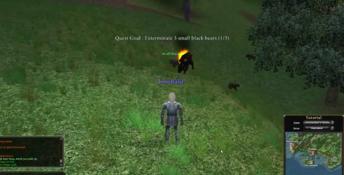
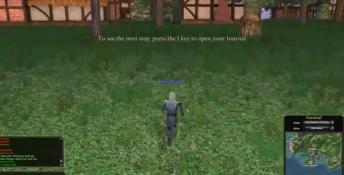

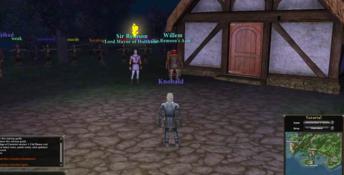
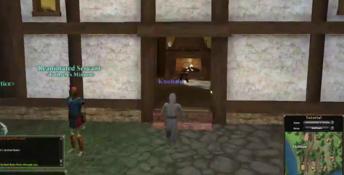
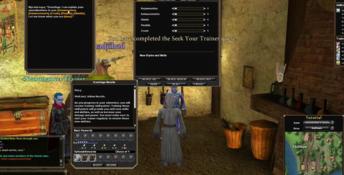

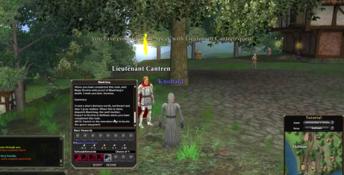
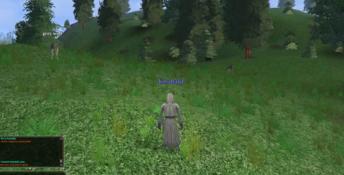
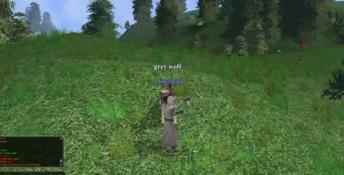
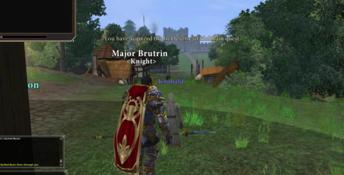
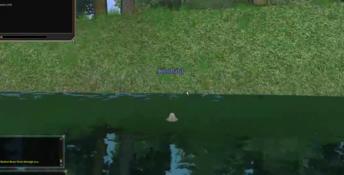
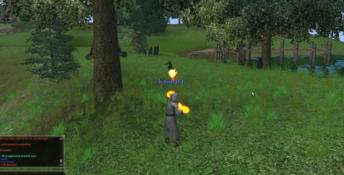
 Cultures
Cultures
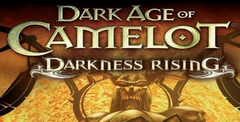 Dark Age of Camelot: Darkness Rising
Dark Age of Camelot: Darkness Rising
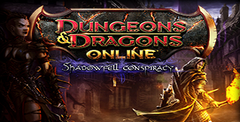 Dungeons & Dragons Online: Stormreach
Dungeons & Dragons Online: Stormreach
 EverQuest II: Kingdom of Sky
EverQuest II: Kingdom of Sky
 Infantry
Infantry
 Neocron
Neocron Nevermore 3
Nevermore 3
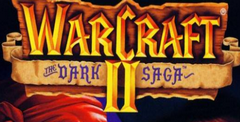 Warcraft 2: The Dark Saga
Warcraft 2: The Dark Saga
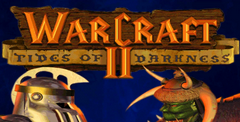 Warcraft 2: Tides of Darkness
Warcraft 2: Tides of Darkness
 World of Warcraft: Cataclysm
World of Warcraft: Cataclysm